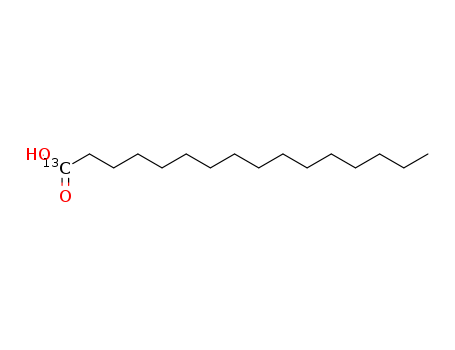- Chemical Name:Palmitic acid-1-13C
- CAS No.:57677-53-9
- Molecular Formula:C16H32 O2
- Molecular Weight:257.43
- Hs Code.:
- European Community (EC) Number:624-077-0
- UNII:2QQO35IYD7
- DSSTox Substance ID:DTXSID40432301
- Wikidata:Q82246374
- Mol file:57677-53-9.mol
Synonyms:Palmitic acid-1-13C;57677-53-9;Hexadecanoic acid-1-13C;(113C)hexadecanoic acid;Hexadecanoic-1-13c acid;2QQO35IYD7;HEXADECANOICACID-1-13C;starbld0016623;2-Hydroxyethylbenzylsulfide;UNII-2QQO35IYD7;Palmitic acid-1-(13-C);SCHEMBL1332805;DTXSID40432301;HY-N0830S3;(1-13C)HEXADECANOIC ACID;AKOS015893927;MS-23632;Palmitic acid-1-13C, 99 atom % 13C;CS-0203900;D78975;Palmitic acid-1-13C, S & P tested, 99 atom % 13C




 Xi
Xi


